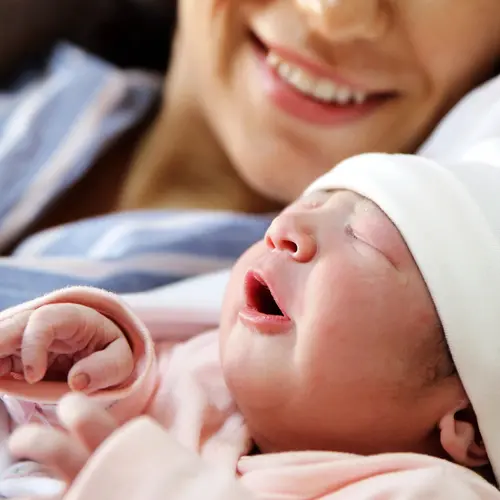Renal agenesis is a congenital kidney disorder, which means it is present at birth. The outlook for some types of this condition is good.
What Is Renal Agenesis?
Most people are born with two kidneys. Renal agenesis is an inherited condition where one or both kidneys don’t form while your baby is in the womb.
Your baby’s kidneys add urine to the amniotic fluid within the womb, which cushions them as they grow. Amniotic fluid has important vitamins and nutrients and it's important for growth, especially lung development.
If your baby's kidneys don't form, there won't be enough amniotic fluid, which causes a condition called oligohydramnios. This can lead to pressure on your baby and other growth irregularities.
There are two types of renal agenesis:
- Unilateral renal agenesis, which happens when only one kidney grows. Many babies and adults live with only one kidney.
- Bilateral renal agenesis, which happens when both kidneys don’t grow and causes an absence of urine.
Renal Agenesis Causes
The exact cause of renal agenesis is unknown, but it is a genetic condition. If you were born with only one kidney or other kidney deformities, your baby is more likely to have the same problem.
Renal agenesis can show up as symptoms of other rare inherited conditions that are present at birth. These include:
- Cat-Eye syndrome, where there’s a fissure in the eye, no anal opening, and renal agenesis
- Rokitansky sequence, where the vagina and uterus don’t form completely
- Fraser syndrome, where your baby is born with sealed eyelids and partially formed sexual organs
- Melnick-Fraser syndrome, which causes hearing loss and kidney deformities
- Mullerian duct, renal, and cervical vertebral defects, or MURCS association, which causes irregular vertebrae and missing vagina and kidneys
Unilateral renal agenesis is common in babies who have poor growth in pregnancy, a condition called intrauterine growth restriction. It is also more common with twins or pregnancies with multiples.
Research suggests certain chemicals and behaviours during pregnancy might increase the risk of renal agenesis. These include:
- Some medications
- Smoking
- Drinking alcohol
- Taking illicit drugs like cocaine
- Obesity
Renal agenesis is rare. The unilateral type happens in 1 of every 1000 to 2000 live births. Bilateral renal agenesis happens in 1 of every 4500 live births. The bilateral type is more common in boys.
Diagnosing Renal Agenesis
Renal agenesis is usually found during your pregnancy ultrasound. If your doctor thinks your baby has this condition, they might recommend genetic testing and genetic counselling.
Genetic testing involves taking a tissue sample from the placenta or some amniotic fluid to test for specific genes. Genetic counselling gives you information about conditions caused by gene changes and what to expect.
You might be referred to a specialist children’s kidney doctor for monitoring and to prepare for treatment at birth.
Renal agenesis might be suspected during pregnancy and confirmed after birth. Your doctor will use different imaging tests like an ultrasound, magnetic resonance imaging, or surgery to diagnose.
Renal Agenesis Symptoms
If your baby is born with unilateral renal agenesis, they might not have any symptoms or other birth defects. Most babies live a normal life without any other problems and sometimes the condition isn’t even found until later in life. The one kidney they have will grow larger to do the work of two kidneys.
Sometimes babies with unilateral renal agenesis are born early and have irregular genitals. Some people might have urinary problems later in life. These can include:
- Backward flow of urine from the bladder into tubes, called ureters, and sometimes the kidneys
- High blood pressure
- Kidney damage that causes high protein in the urine
- Kidney failure
Babies born with bilateral renal agenesis need medical treatment in the womb to survive. Without kidneys, they can't make urine for the amniotic fluid. Other organs might not grow. They may only survive a few hours or a few days after birth because of severe lung problems.
Treatment for Renal Agenesis
If renal agenesis is found during pregnancy, you will be transferred to a specialist team who focus on high-risk pregnancies. If your doctor thinks your baby has bilateral renal agenesis, they might also add palliative care to your team. This will help you make choices for supportive end-of-life care after birth.
There is no cure for bilateral renal agenesis. Clinical studies with experimental therapies are happening, but the treatment at birth is supportive and will make your baby comfortable with warmth, oxygen, or pain medication. Some parents choose not to continue the pregnancy.
Treatment for unilateral renal agenesis will vary. As long as there is enough amniotic fluid in the womb, they might not have any other problems or symptoms.
Your baby will need continual check-ups every year to treat any symptoms or complications like high blood pressure or backward flow of urine, which could cause kidney damage.
When it comes to congenital disorders, pregnancy check-ups and screenings are important. These can help your doctor find any health problems your baby might have, like renal agenesis, and help you make decisions about their health.

